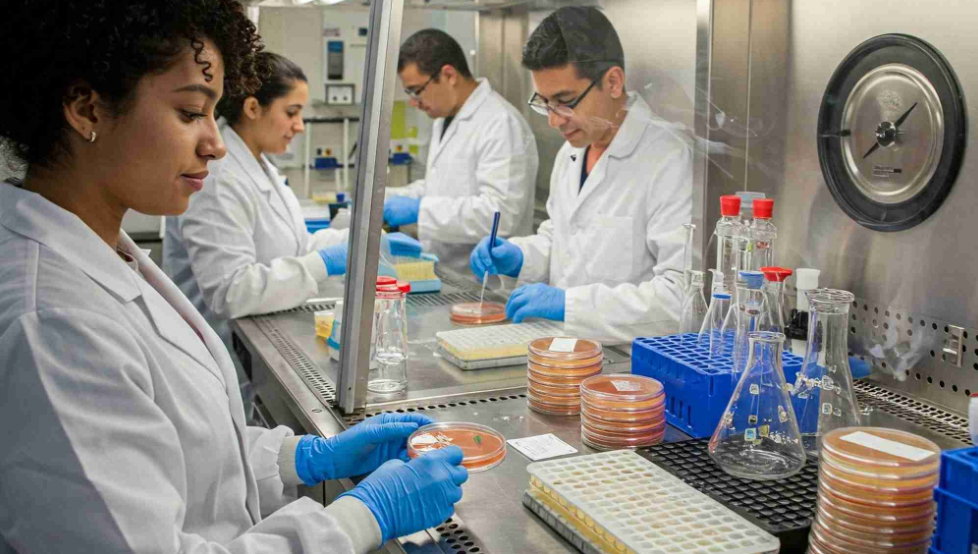The Significance of Genetic Testing and STR Analysis in Cell Line Verification
In the dynamic world of biomedical research, cell lines are the fundamental building blocks for countless experiments, from drug discovery and disease modeling to gene therapy development. However, the integrity of these research pillars is perpetually threatened by a silent, insidious problem: cell line misidentification and contamination. The consequences can be catastrophic, leading to irreproducible results, wasted resources, and ultimately, a significant impediment to scientific progress. This is where the critical importance of genetic testing, particularly Short Tandem Repeat (STR) analysis, in cell line verification comes to the forefront.
The Silent Crisis: Why Cell Line Verification Matters
Imagine dedicating years to a research project, only to discover that the cell line you’ve been working with is not what you believed it to be. This isn’t a hypothetical scenario; it’s a stark reality that has plagued the scientific community for decades. Studies have estimated that a substantial percentage of cell lines in use are either misidentified or contaminated with other cell types. The implications are profound:
- Invalidated Research: Findings based on misidentified cell lines are inherently flawed and cannot be trusted. This can lead to the retraction of published papers and a loss of scientific credibility.
- Wasted Resources: Millions of dollars and countless hours are squandered annually on experiments using incorrect cell lines. This diverts funding and effort from truly impactful research.
- Delayed Progress: Misidentification can hinder the development of new therapies and diagnostic tools, as researchers chase false leads or misinterpret results.
The problem is particularly acute with frequently used and highly proliferative cell lines, which are more susceptible to cross-contamination in shared laboratory environments. Ensuring the authenticity of every cell line, from primary cultures to established immortalized lines, is paramount for robust and reliable scientific discovery.
Unveiling Identity: The Power of STR Analysis
Among the various methods available for cell line verification, Short Tandem Repeat (STR) analysis has emerged as the gold standard. But what exactly is STR analysis, and why is it so effective?
What are Short Tandem Repeats?
STRs are short sequences of DNA (typically 2-6 base pairs long) that are repeated multiple times in a head-to-tail fashion. These repeats are highly polymorphic, meaning the number of repeats varies significantly between individuals. For example, one individual might have 10 repeats of a specific STR sequence, while another might have 15. This variation makes STRs excellent genetic markers for distinguishing between different individuals and, crucially, different cell lines.
The Mechanism of STR Analysis
The process of STR analysis for cell line verification typically involves several key steps:
- DNA Extraction: Genomic DNA is isolated from the cell line sample.
- PCR Amplification: Specific primers are used to amplify multiple STR loci simultaneously using the Polymerase Chain Reaction (PCR). These primers are designed to flank the STR regions, allowing for the amplification of fragments containing varying numbers of repeats.
- Fragment Separation and Detection: The amplified DNA fragments are then separated by size using capillary electrophoresis. A fluorescent dye incorporated into the primers allows for the detection and quantification of each fragment.
- Data Analysis: Software analyzes the electropherogram data, identifying the size and number of repeats at each STR locus. This generates a unique “DNA fingerprint” or STR profile for the cell line.
By comparing the generated STR profile to a reference database or to the profile of the original cell line, researchers can definitively confirm its identity or detect any contamination.
The Advantage of STR Analysis in Cell Line Verification
STR analysis offers several compelling advantages that make it indispensable for cell line authentication:
- High Discriminatory Power: The high polymorphism of STR loci ensures a unique genetic profile for virtually every cell line, making it highly effective at distinguishing even closely related cell types.
- Robustness: STR analysis can be performed on a wide range of sample types, including frozen cells, archived samples, and even small amounts of DNA.
- Standardization: The methodology is well-established and standardized, allowing for consistent and comparable results across different laboratories. Reputable organizations like the American Type Culture Collection (ATCC) provide guidelines and databases for STR profiling of human cell lines.
- Detection of Contamination: Beyond simple misidentification, STR analysis can readily detect contamination by other human cell lines, even at low levels.
Consider the example of the HL-60 cell line, a widely used model for studying myeloid leukemia. Given its prevalence, the HL-60 cell line is particularly susceptible to misidentification or cross-contamination. Regular STR analysis is crucial for researchers working with HL-60 to ensure the authenticity of their experimental system, thereby guaranteeing the validity of their findings related to leukemia research.
See also: Elevate Your Events with AnzhuCraft’s Earth-Friendly Tableware
Practical Steps for Ensuring Cell Line Authenticity
To mitigate the risks of misidentification and contamination, researchers should adopt a proactive approach to cell line verification:
- Regular Testing: Implement a routine schedule for STR analysis of all cell lines, especially upon receipt from external sources, after significant passage numbers, and before starting critical experiments. This is particularly important for high-impact cell lines like HL-60.
- Quarantine New Cell Lines: Isolate newly acquired cell lines until their authenticity has been confirmed through STR analysis.
- Maintain Detailed Records: Keep meticulous records of cell line origins, passage numbers, and all verification reports.
- Use Reputable Sources: Obtain cell lines from established cell banks that perform routine authentication.
- Educate Laboratory Personnel: Ensure all researchers are aware of the importance of aseptic techniques and cell line verification protocols.
- Consider a “Verification Certificate”: Before publishing, some journals now require proof of cell line authentication, further underscoring the importance of this practice.
Even for well-characterized cell lines such as HL-60, vigilance remains key. The scientific community’s collective commitment to these practices will significantly enhance the reproducibility and reliability of biomedical research.
Conclusion
The integrity of scientific research hinges on the authenticity of its fundamental components. Cell line misidentification and contamination represent a profound challenge, undermining years of effort and immense resources. Genetic testing, specifically STR analysis, offers a powerful and indispensable solution to this problem. By providing a reliable “DNA fingerprint” for each cell line, STR analysis empowers researchers to confirm identity, detect contamination, and ultimately, build their experiments on a foundation of certainty. Embracing routine cell line verification is not merely a best practice; it is an ethical imperative that safeguards scientific progress and accelerates the pace of discovery. The continued reliance on accurate and authenticated cell lines, like the HL-60 line for leukemia research, will pave the way for more robust findings and meaningful advancements in human health.






